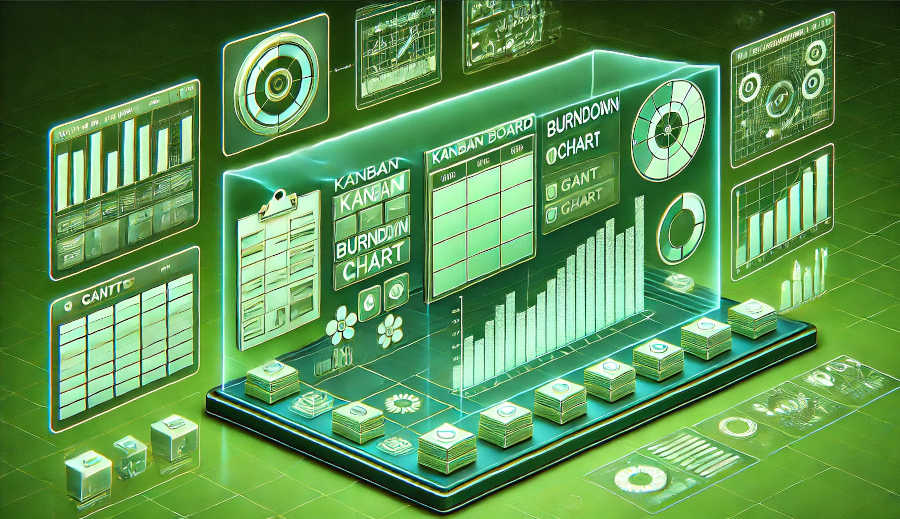Understanding the Purpose of Stand-up Meetings
Stand-up meetings serve multiple purposes within a project team. Firstly, they offer a quick update on each team member's progress since the last meeting. This allows everyone to stay informed about the status of various tasks and identify any potential bottlenecks or delays. By sharing achievements and challenges, team members can also learn from each other and collaborate to find solutions. Secondly, stand-up meetings provide an opportunity to align priorities and ensure that everyone is working towards the same objectives. This helps to prevent misunderstandings and keep the project on track. Finally, these meetings foster a sense of accountability and transparency within the team, as everyone is expected to contribute and be responsible for their work.
To fully realize the benefits of stand-up meetings, it's important to keep them focused and concise. The typical duration of a stand-up meeting is around 15 minutes, so it's crucial to stay on topic and avoid getting sidetracked. Each team member should have a clear understanding of what they need to share and be prepared to do so in a timely manner. By respecting the time limits and following the agenda, stand-up meetings can be highly productive and effective communication tools.
Preparing for Stand-up Meetings
Preparation is key to communicating effectively in stand-up meetings. Before each meeting, team members should take some time to reflect on their progress, identify any challenges they have encountered, and determine what they plan to work on next. This will help them to organize their thoughts and ensure that they can provide clear and concise updates during the meeting.
In addition to personal preparation, it's also important for the team as a whole to establish a clear agenda for each stand-up meeting. The agenda should include a brief overview of the purpose of the meeting, a list of topics to be discussed, and a time limit for each item. By following a structured agenda, the meeting can run smoothly and efficiently, and everyone will know what to expect.
Another important aspect of preparation is to ensure that all necessary information is available before the meeting. This may include project documentation, status reports, or any other relevant materials. By having this information readily accessible, team members can refer to it during the meeting and provide more accurate and detailed updates.
Active Listening and Engagement
Effective communication is a two-way street, and active listening is just as important as speaking. During stand-up meetings, team members should focus on listening to their colleagues' updates and ask clarifying questions when necessary. This shows that they are engaged in the conversation and helps to ensure that everyone understands the information being shared.
In addition to listening, it's also important to be present and engaged during the meeting. This means avoiding distractions such as checking emails or using mobile devices. By giving the meeting your full attention, you can contribute more effectively and build stronger relationships with your team members.
To encourage active listening and engagement, the meeting facilitator can use techniques such as asking open-ended questions, encouraging discussion, and summarizing key points. This helps to keep the conversation flowing and ensures that everyone has an opportunity to contribute.
Clear and Concise Communication
When communicating in stand-up meetings, it's important to be clear and concise. Team members should avoid using jargon or technical terms that may not be understood by everyone, and focus on communicating their message in a simple and straightforward manner.

In addition to being clear, it's also important to be concise. Stand-up meetings are meant to be brief, so team members should aim to provide their updates in a timely manner and avoid going into too much detail. By keeping their messages short and to the point, team members can ensure that the meeting stays on track and everyone has an opportunity to share their thoughts.
To communicate clearly and concisely, team members can use techniques such as using bullet points, highlighting key points, and avoiding unnecessary words. They should also practice their updates beforehand to ensure that they can deliver them smoothly and confidently.
Non-Verbal Communication
Non-verbal communication plays a significant role in how we are perceived by others, and it's important to be aware of our body language and facial expressions during stand-up meetings. Maintaining good eye contact, standing up straight, and using positive body language can help to convey confidence and engagement.
In addition to body language, facial expressions can also have a powerful impact on communication. Smiling, nodding, and using appropriate facial expressions can help to show that you are interested in what your colleagues are saying and that you are supportive of the team.
It's also important to be aware of the non-verbal cues of others. Paying attention to your colleagues' body language and facial expressions can help you to understand their emotions and intentions, and respond appropriately.
Handling Challenges and Conflict
Stand-up meetings may sometimes involve discussions of challenges or conflicts within the team. When this happens, it's important to approach the situation with a positive attitude and a focus on finding solutions.
The first step in handling challenges and conflict is to listen to everyone's perspective. By giving each team member an opportunity to share their thoughts and feelings, you can gain a better understanding of the issue and work towards a mutually beneficial solution.
Once everyone has had a chance to speak, it's important to focus on finding common ground and identifying potential solutions. This may involve brainstorming ideas, evaluating different options, and coming to a consensus.
Finally, it's important to follow up on any decisions or actions that are taken during the meeting. This helps to ensure that the issue is resolved and that the team can move forward together.
Conclusion
Effective communication is essential for the success of any project, and stand-up meetings provide a valuable opportunity for team members to share information, align priorities, and collaborate towards common goals. By understanding the purpose of stand-up meetings, preparing effectively, actively listening and engaging, communicating clearly and concisely, being aware of non-verbal communication, and handling challenges and conflict in a positive manner, teams can make the most of these meetings and enhance their overall communication and collaboration.
In conclusion, stand-up meetings are a powerful tool for project teams, but their effectiveness depends on how well they are conducted. By following the principles and tips outlined in this article, teams can ensure that their stand-up meetings are productive, engaging, and contribute to the success of the project. So, the next time you attend a stand-up meeting, remember to be prepared, listen actively, communicate clearly, and work together towards a common goal. With these strategies in place, you can make the most of this valuable communication opportunity and drive your project forward.
ARTICLE TITLE :How to effectively communicate in stand-up meetings ,AUTHOR :ITpmlib

















